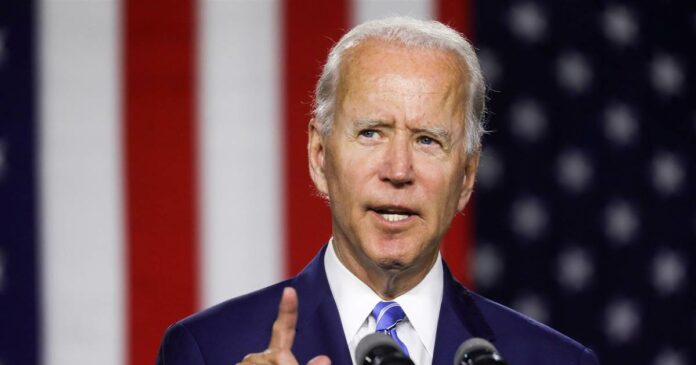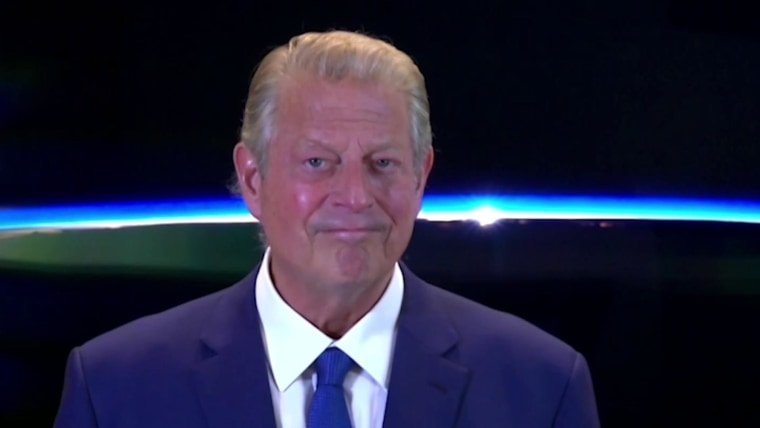When Hillary Clinton proposed a climate plan in the run-up to the 2016 election that included $60 billion for clean energy infrastructure and $30 billion more to redevelop coal-mining communities, it was met with mixed reviews: an “ambitious” plan but one with “holes.”
The plan proposed some of the largest investments in clean energy tech put forward by a major presidential candidate, a sign of how far the topic of climate change had come in politics but, for activists, also a sign of how far was left to go.
Last week, almost exactly five years later, Joe Biden, the presumptive Democratic presidential nominee, released a $2 trillion plan that climate activists say could create the kind of change necessary to avert the more catastrophic consequences of climate change.
“We’re talking about major investments in every corner of the country and every ZIP code,” said Steve Capanna, the director of U.S. climate policy and analysis at the Environmental Defense Fund, a New York-based advocacy group. “That’s a great way to put people of diverse income levels and diverse skill sets back to work in a way that will be rebuilding better than just going back to the way things were before.”
Biden’s plan spans four years and includes some lofty goals — including achieving a 100 percent clean electricity standard by 2035.
“The first linchpin to decarbonizing the United States is cleaning up our electricity system,” said Leah Stokes, an assistant professor of political science at the University of California, Santa Barbara who specializes in climate policy. “I can’t even describe how excited I was to see that in the plan.”
Biden’s proposal has earned high praise from climate scientists and environmental advocates, who say it would put the U.S. on a challenging but achievable path to building a clean energy economy and would help restore the country’s reputation on the global stage.
The climate plan is significantly more aggressive than the climate road map Biden set forth last year, which proposed spending $1.7 trillion over 10 years.
“The U.S. federal budget is $4 trillion a year, on average,” Stokes said. “Biden is committing to spending one-eighth of the budget on climate change in his first term. That’s huge.”
Let our news meet your inbox. The news and stories that matters, delivered weekday mornings.
Biden’s proposal builds on the platforms of several of his former primary opponents, particularly Washington Gov. Jay Inslee, who ran a climate change-focused campaign, and Sen. Elizabeth Warren, D-Mass.
Although Clinton’s climate goals were seen as bold at the time, Biden’s stance shows that climate change has become a top priority this election cycle and a core issue among Democrats — if not among Americans more broadly. The Pew Research Center recently found that two-thirds of people surveyed in the U.S. said the government should do more to address climate change.
Stokes said the plan’s emphasis on energy efficiency, which includes proposals to upgrade 4 million buildings over four years, is critical because it would likely mean less money would need to be spent on new technologies and infrastructure.
The 2035 timeline is also challenging but “very doable,” Stokes said.
A report released last month by the University of California, Berkeley’s Goldman School of Public Policy said the U.S. can achieve 90 percent carbon-free electricity by 2035 with technologies that exist today. Stokes said Biden’s proposal to foster innovation and establish a government-led Advanced Research Projects Agency to develop new technologies could help make up the difference.
Nathan Hultman, director of the Center for Global Sustainability at the University of Maryland, said one of the plan’s strengths is its recognition that addressing climate change requires solving many different but related problems, from transportation to agriculture to jobs to social justice.
“We have to solve multiple problems simultaneously,” Hultman said. “That should be the single most important element of any climate plan.”
Reviving the U.S. economy and creating jobs across industries are hallmarks of Biden’s climate plan — issues that would be important in any election but that are especially so as the country remains mired in a pandemic that has killed more than 140,000 people in the U.S., caused soaring unemployment and sent the economy spiraling into a recession.
The investments outlined in Biden’s plan will speed economic recovery while making American industries more sustainable and resilient, said Gerald Torres, a professor of environmental justice at the Yale School of the Environment.
“We’re in a position now where we can say: What kind of country do we want to build back?” he said.
The climate plan also incorporates key environmental justice components that aim to engage and protect communities of color, which are disproportionately affected by climate change. That includes earmarking 40 percent of clean energy benefits to those front-line communities.
The proposal calls for establishing an office of environmental and climate justice at the Justice Department, a move Torres said would be important beyond symbolism.
“It signals that environmental justice is something that has to be integrated into thinking about environmental management,” he said. “It shows that there’s real promise there.”
Biden’s plan also includes measures to engage with global partners on climate change by re-entering the Paris Agreement. President Donald Trump announced plans in 2017 to quit the landmark climate accord, but Biden has vowed to bring the U.S. back into the fold.
Hultman said the move would help restore U.S. credibility in the international arena.
“The Paris Agreement remains our most robust approach to solving climate change at a global scale,” he said. “The past four years have raised a number of questions with our allies and the global community about our reliability. Rejoining the Paris Agreement is an important signal, but the substance is just as important.”
Hultman added that the ambitious climate plan could be a game changer not only among voters who care about climate action, but also among those who have seen from recent events the importance of the country’s investments and policy decisions to ensure the health and safety of its people.
“It’s going to be tough, but going to the moon was hard, and we did it,” Hultman said. “It’s important to remember that there are benefits to reaching these goals. There are tremendous benefits to growing the economy and stabilizing the climate before we get ourselves into an outcome that we can’t reverse.”







